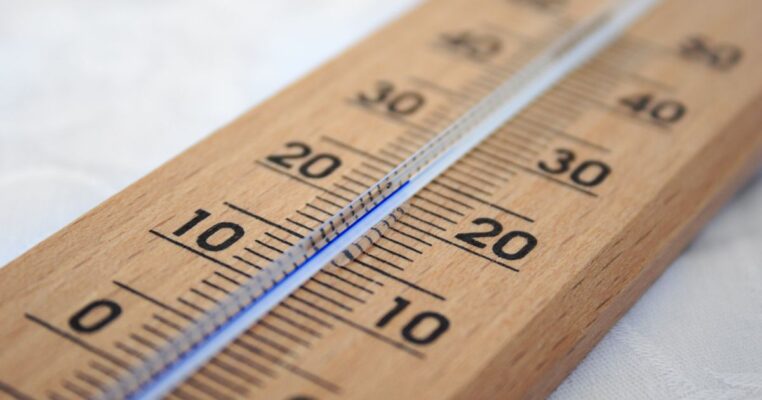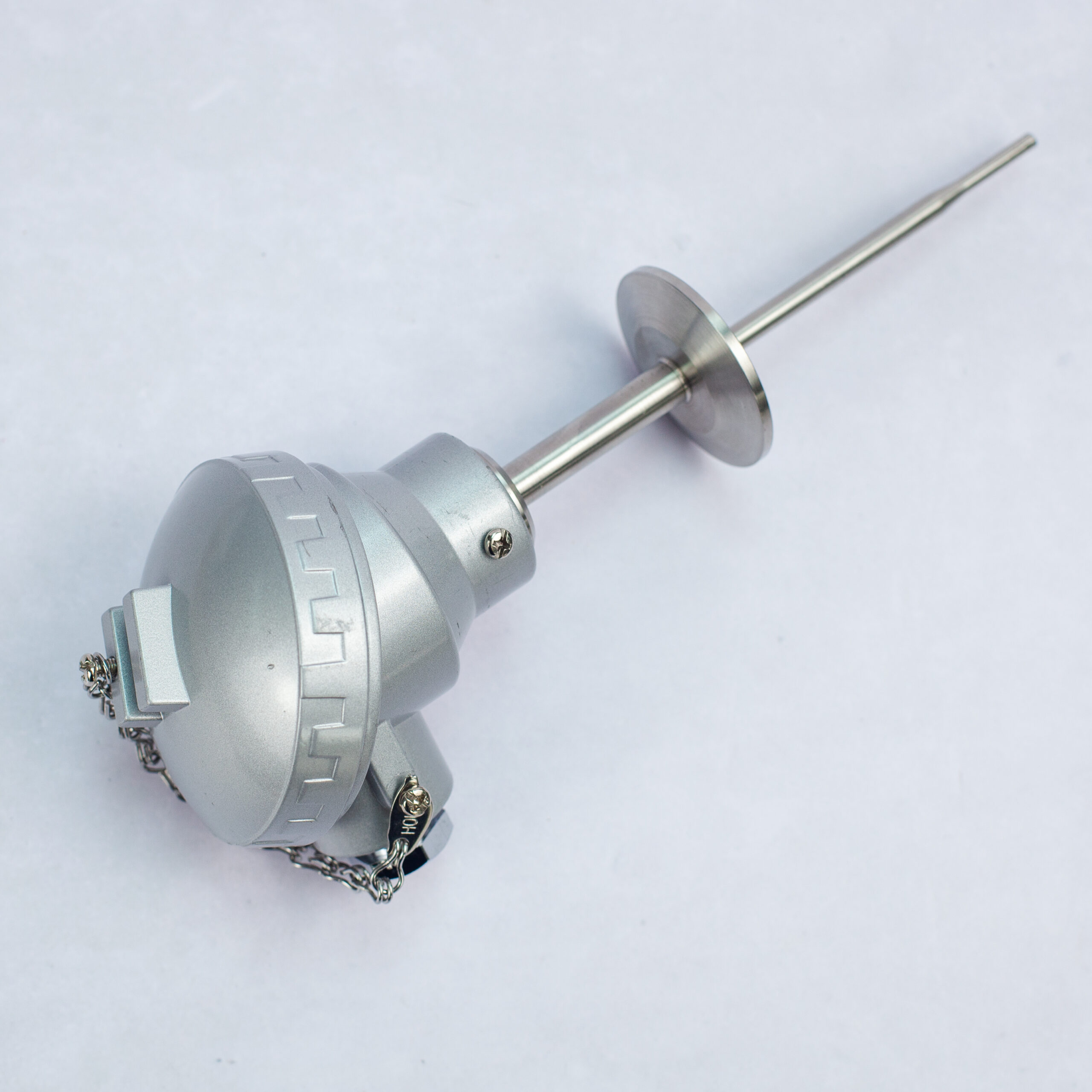What is Temperature? Ultimate Guide
A Complete Guide to Temperature
Temperature is a fundamental concept in physics and chemistry, and it plays a crucial role in our daily lives. It is a measure of the degree of hotness or coldness of an object or a substance.
We know not to touch a hot stove because it will give off heat and burn our hands. Similarly, we wear gloves when it’s snowing outside because we want to retain heat and avoid getting cold.
But have you ever wondered why we feel the sensation of heat? How is this related to the temperature of an object? What exactly is temperature?
In this guide, we discuss what temperature is, temperature scales and how temperature measurement devices are used in various applications.
Let’s dive in.
What is Temperature?
Temperature measures the average kinetic energy of particles in an object. It provides us with an indication of how hot or cold an object is.
When we say that an object has a high temperature, it means that its particles are moving rapidly and have a high average kinetic energy.
Conversely, when an object has a low temperature, its particles are moving slowly and have a low average kinetic energy.
What is Kinetic Energy?
Kinetic energy refers to the energy possessed by a body due to its motion. In the context of temperature, we are specifically concerned with the average kinetic energy of particles in an object.
As the temperature of an object increases, the motion of its particles also increases, resulting in a higher average kinetic energy.
Temperature Scales
Temperature is measured using different scales, each with its own set of reference points and units. The most commonly used temperature scales are the Kelvin (K), Celsius (°C), and Fahrenheit (°F) scales.
Kelvin Scale
The Kelvin scale, also known as the absolute temperature scale, is based on the concept of absolute zero, which is the lowest possible temperature.
On the Kelvin scale, absolute zero is defined as 0 K. The Kelvin scale is commonly used in scientific and mathematical calculations, as it is an absolute scale that does not have negative values.
Celsius Scale
The Celsius scale, also known as the centigrade scale, is widely used in everyday life and scientific contexts.
On the Celsius scale, the freezing point of water is defined as 0°C, and the boiling point of water is defined as 100°C. The Celsius scale is based on the relationship between the freezing and boiling points of water under standard atmospheric conditions.
Fahrenheit Scale
The Fahrenheit scale is primarily used in the United States and a few other countries. It was invented by German physicist Gabriel Fahrenheit.
On the Fahrenheit scale, the freezing point of water is defined as 32°F, and the boiling point of water is defined as 212°F.
Temperature Measurement Devices
Temperature is measured using a variety of instruments, each suited to different applications and temperature ranges. The most common tool for measuring temperature is the thermometer.
These temperature measurement devices allow for accurate measurement of temperature in a wide range of applications, from everyday use to scientific research and industrial processes.
Did you know that we design and manufacture custom-built resistance thermometers? If you’re not sure what you need, please get in touch and we can help identify your requirements.
Send An EnquiryThermometers
Thermometers are devices used to measure temperature. They work by measuring the expansion or contraction of a liquid, such as mercury or alcohol, as it is heated or cooled.
The most common type of thermometer is the mercury thermometer, which consists of a glass tube filled with mercury. As the temperature rises, the mercury expands and rises up the tube, indicating the temperature on a scale.

Thermal Expansion
Another way to measure temperature is through thermal expansion. This method involves measuring the change in length, volume, or some other physical property of a substance as it is heated or cooled.
For example, a bimetallic strip is made up of two different metals with different coefficients of thermal expansion. As the temperature changes, the strip bends, indicating the temperature.
Electrical Resistance
Electrical resistance is also used to measure temperature. This method involves measuring the change in resistance of a material as it is heated or cooled.
As the temperature increases, the resistance of a material typically increases. This relationship is used in devices such as thermistors and resistance temperature detectors (RTDs).
Radiation Methods
Radiation methods involve measuring the amount of thermal radiation emitted by an object.
This method is commonly used in infrared thermometers and thermal imaging cameras, which measure the amount of infrared radiation emitted by an object to determine its temperature.
This method is non-contact and can be used to measure the temperature of objects that are difficult to reach or too hot to touch.

Technological Applications
Temperature Control Systems
Temperature control systems are widely used in various industries, including food processing, chemical manufacturing, and pharmaceuticals.
These systems help maintain a consistent temperature in a controlled environment, ensuring the quality and safety of the products being produced.
For example, in the food industry, temperature control systems are used to keep food at the appropriate temperature to prevent spoilage and ensure food safety.
In the pharmaceutical industry, temperature control systems are used to maintain the stability of drugs and vaccines during storage and transportation.
Industrial Processes
Temperature plays a critical role in many industrial processes.
For example, in the steel industry, the temperature of the molten steel must be carefully controlled to ensure the proper chemical composition and physical properties of the final product.
In the semiconductor industry, temperature control is essential for the production of high-quality electronic components. Temperature control systems are also used in the production of plastics, ceramics, and other materials.
Scientific Research
Temperature is an important parameter in many scientific experiments. Temperature control systems are used to maintain a constant temperature in laboratory equipment, such as incubators, ovens, and refrigerators.
In biological research, temperature control is essential for maintaining the viability of cells and tissues.
In physics research, temperature control is necessary for studying the properties of materials at different temperatures.
Temperature Sensors from Process Parameters
Temperature sensors are widely used in various industrial processes where maintaining specific temperature ranges is crucial. Temperature plays a significant role in influencing chemical reactions, reaction rates, energy consumption, and the lifespan of industrial equipment.
To measure temperature, a variety of technologies such as liquid in glass, thermocouples, resistance thermometers (RTDs), thermistors, and infrared cameras are commonly utilised.
At Process Parameters, a leading UK temperature sensor manufacturer, we supply a range of temperature sensors.
If you would like some advice or a free quote, please do not hesitate to contact the team at Process Parameters. Call us at 01628 778688 or email us here.
Send An EnquiryPlatinum Resistance Thermometers (RTD Sensor, PRT, Pt100 Sensors, Pt1000)
RTD Pt100 Temperature Sensor PPL3-P, IP68 KNE Terminal Head, 4-20mA Transmitter
Platinum Resistance Thermometers (RTD Sensor, PRT, Pt100 Sensors, Pt1000)
Platinum Resistance Thermometers (RTD Sensor, PRT, Pt100 Sensors, Pt1000)
Platinum Resistance Thermometers (RTD Sensor, PRT, Pt100 Sensors, Pt1000)
FAQs
What is a simple definition of temperature?
Temperature is a measure of the average kinetic energy of the particles in a substance. It indicates the degree of hotness or coldness of an object and determines the direction of heat transfer. Temperature is commonly measured using various scales such as Celsius, Fahrenheit, or Kelvin.
What is the difference between heat and temperature?
Heat is a form of energy transfer between substances due to a temperature difference. Temperature, on the other hand, is a measure of the average kinetic energy of the particles in a substance. In essence, heat reflects the transfer of energy, while temperature reflects the intensity of molecular movement.
What is temperature in terms of kinetic energy?
Temperature is a reflection of the average kinetic energy of particles in a substance. As temperature increases, the particles move faster, resulting in higher kinetic energy. Conversely, lower temperatures signify slower particle movement and lower kinetic energy. This relationship between temperature and kinetic energy is fundamental to understanding thermal behaviour.
Related Guides:
- What Is A Temperature Sensor?
- How To Check if You Have a Faulty Temperature Sensor
- Comparing Contact and Non-Contact Temperature Sensors
- How Does a Thermal Imaging Camera Work?
- What is a Temperature Transmitter?
- Can You Improve Your Thermal Efficiency With Imaging Cameras?
- What is a Thermocouple?
- Pt100 Wiring Methods – 2, 3 or 4 wire?
- What is a Pt100 Sensor Working Principle?
- Pt100 Temperature Sensor Specification





